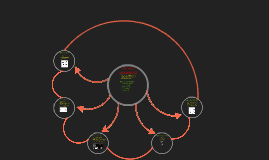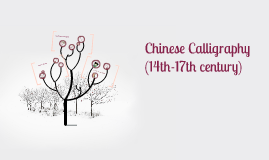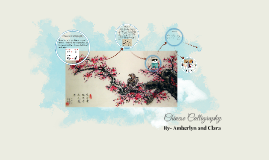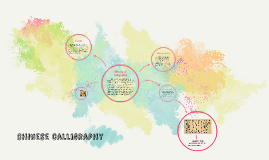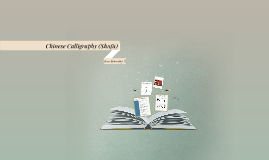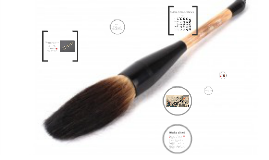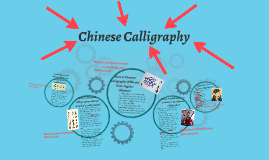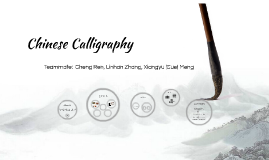Chinese Calligraphy
Transcript: Date:02/07/14 How is Chinese calligraphy different from regular Chinese? In what dynasty did Chinese calligraphy become the most sophisticated? Chinese calligraphy reached its highest peak in both the Jin and Tang dynasties (618-907) In the Tang dynasty also known as the golden age, Calligraphy was praised as one of Tangs crowning achievements Chinese calligraphy was also used as a way of evaluating a person or a way of selecting talents What kind of tools are needed to do chinese calligraphy? Date:03/02/14 Some notable calligraphers were... Wei Shuo (272-349) Wang Xizhi (303-361) Wang Xianzhi (344-386) Ouyang Xun (557-641) Yu Shinan (558-638) Chu Suiliang (597-658) Emperor Taizong of Tang (599-649 Zhang Xu (658-747) Yan Zhenqing (709-785) Huai Su (737-799) Chinese Calligraphy Website:www.art-virtue.com Chinese calligraphy began to develop more than 3000 years ago. It eventually evolved into 5 basic script types which are all still used today. 1~seal script: When Pictograms and ideographs began to take standardized form, it evolved into seal script. 2~Clerical script: Later in the Han dynasty, (2nd century AD) a new regularized script was formed and used by government clerks called Clerical sript. 3/4~Running script and Cursive script: Also in Han, these two scripts were developed both as a "natural evolution and response to the aesthetic potential of brushed ink." 5~Standard script: Individual brushstrokes of clerical script, inflicted with more "fluid and asymmetrical features" of cursive script, created a final script called standard script. Website:en.wikipedia.org Date:03/02/14 Website:www.metmuseum.org Date:02/21/14 Ink brush, ink, paper and ink stone are all essential when it comes to writing chinese calligraphy. Brush~ The body of a brush is made from either bamboo or rarer materials such as wood, glass, ivory, silver or gold. The head of the brush is made from hair or feathers of wide variety of animals such as rabbit, deer, duck, goat, pig, tiger, wolf, weasel, chicken ect. Paper~ Special types of paper are used. In China, Xuanzhi is the preffered type. Ink~ Made from soot and binders and comes in an ink stick. (Ink sticks must be rubbed with water on an ink stone until correct consistency.) Ink stone~ Used to grind the solid ink stick into liquid ink and also contains the ink once it is in liquid form. How is Chinese calligraphy relevant to today's calligraphy? Website:en.wikipedia.org Website:www.asia-art.net en.wikipedia.org Who were some famous calligraphers? Date:03/02/14 In calligraphy, correct strokes, stroke order, character structure, balance and rhythm are essential. You must also be able to write in regular Chinese before you can do calligraphy. Chinese calligraphy is one of the highest forms of chinese art. It serves the purpose of conveying thought and shows the abstract beauty of a line.






